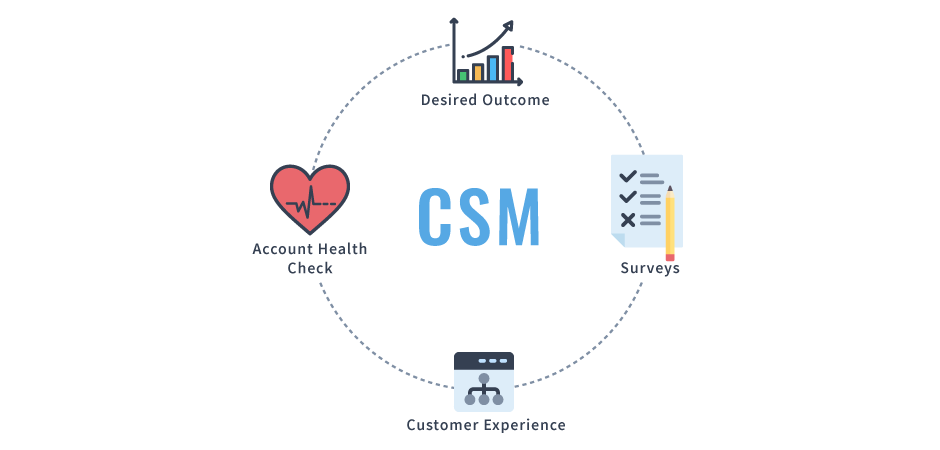
In the industry, there has been debate on how many accounts a customer service manager (CSM) should manage. While the general assumption appears to be one CSM per $2 million ARR, this coverage ratio is not accurate. It’s a good idea to grasp all facets of customer success before applying a practical solution.
Table of Contents
Why Is the Common CSM Coverage Ratio Outdated?
The $2 million per ARR ratio is unattainable since it suggests that customer success is limited to SaaS firms. It’s also applicable to non-tech, transactional firms that don’t necessarily have regular client relationships.
We must distinguish customer success from traditional account management in addition to refuting this SaaS-specific misconception. Clients were seen as little more than a number by the latter. Although it may appear rational to classify your consumers based on the amount of money they bring in, this technique is a trap with long-term consequences.
As a result, we should discontinue using the dollars-per-ARR ratio as a CSM model if it is a vestige of old traditional account management.
What is the most effective CSM formula?
You can’t have a single CSM per customer in today’s segmented business environment. After precisely examining the required statistics and insights, the right formula will be determined based on your scenario.
Customer success practitioners (CSPs) are required for diverse customer groups. The first step towards a realistic solution is a logical segmentation of your clients based on their relevant experience.
The next step is to determine the optimal coverage level for each logical section. This coverage should be from the perspective of the consumer, not what you want to offer.
For example, you might notice that a certain segment necessitates careful consultation. Identifying the CSPs who will serve those consumers helps you figure out the parameters of that coverage model. This method also makes determining how many accounts each CSP may cover at that level simple.
If each CSP is responsible for five accounts in a section with 50 accounts, you’ll need to hire at least 10 CSPs. You’ll improve efficiency over time by recruiting more CSPs for more demanding sectors until you reach an optimal ratio.
Although you may not need analysts at first, as you reach a certain number of clients across various categories, they may become important. This cost should be included in your customer success management budget.
How to Deliver a High-Quality CSM Experience Without Spending Too Much Money
The elements listed below will assist you in implementing an optimal number of CSMs while staying under budget:
Determine the capacity of each CSM.
It’s a good idea to schedule your CSM time once a month. Internal activities such as training, meetings, and vacation time can all be accounted for using this method. Your CSM should devote at least 100 hours per month to direct service, with the remainder going to the non-core activities described above.
Select the required level of service.
While this is a unique decision, defining the type of service your company should provide makes logical. It could be a fully loaded, mid-level, or low-touch service, depending on the product.
Onboarding, regular account check-ins, quarterly business reviews, and speedy response time to problems might all be part of the premium subscription. Mid-level and low-touch services provide sluggish replies and less client engagement.
Stick to the budget
After you’ve established a good CSM-to-accounts ratio, the next step is to make sure your budget matches your customer success goals. How much do you allot each account if each CSM requires $100k per year to cover salary, benefits, and other costs?
If the numbers don’t add up, either adjust the service level or raise your charges to meet your financial requirements.
CSM as a Percentage of Total Revenue
Full-service customer success management accounts for 15 to 25% of annual revenue, according to industry analytics and insights. It’s comparable to other critical corporate responsibilities like sales and marketing in this way. The following cautions, however, pertain to the findings of this study:
In terms of personnel, infrastructure, and other costs, there is no unanimous consensus on what a fully loaded service comprises.
Include as few goods as possible in your CSM costs. Customer support costs, for example, are frequently included in operations.
The initial year’s revenue percentage is likely to be larger than in future years. Because of the initial CSM costs of training, onboarding, and deployment, this is the case.
As your connection evolves, your consumers should be able to pay more through cross-sells and upsells.
If this is your first time using customer success management, you may need to spend more than the industry average. Rather than cutting costs, the goal is to gather useful long-term insights.
Instead of using the staff-per-revenue model, a well-run business implements a fully loaded service as a percentage of annual sales.
Conclusion
Test your model once you’ve created one that’s both practical and scalable until you’ve reached a desirable account average per CSM. The ideal way is to keep an eye on engagement levels in various accounts and adjust the factors till your company recognizes the worth of its offerings.

